Canine Herbal & Natural Healthcare
 You may have heard of dogs “detoxing” when they first start a raw diet. This all depends on the current health levels of the dog, particularly how many toxins it has been exposed to, and this in particular includes the number of vaccines, heartworm medications, flea and worm preventatives etc they have been given which all have chemicals in them that are difficult for the dog to expel from the body.
You may have heard of dogs “detoxing” when they first start a raw diet. This all depends on the current health levels of the dog, particularly how many toxins it has been exposed to, and this in particular includes the number of vaccines, heartworm medications, flea and worm preventatives etc they have been given which all have chemicals in them that are difficult for the dog to expel from the body.
With the increased health that raw provides, occasionally this build up of toxins will start to be excreted, usually through the body’s largest organ; the skin. Typically, this will present itself as unexplained itchy skin, itchy ears with or without discharge and runny eyes. These are all signs that the body is cleaning itself naturally and no oral steroid or injections, antibiotics or topical treatments should be necessary, and in fact, if used, will suppress the detoxification process and cause it to internalise into the major organs potentially leading to organ disease later in life.
For this reason, dogs usually need to detoxify and the following natural healthcare methods will enable them to do so safely, slowly and naturally without intervention with chemical medicines and preventatives.
At K9 Rescue we have many years experience of using natural and herbal methods in canine healthcare and have learnt that utilising these methods in the short-term, saves a lot of money in the long-term as veterinary bills are dramatically reduced (to almost zero in many instances) in line with the increased health of the dog.
From a science perspective, everything has an electrical frequency, and the physical body is no different, and that frequency is determined by the health and wellbeing of the individual – improved wellness will increase the body’s frequency yet when the frequency lowers, the immune system is compromised and ill health will begin to manifest and further disrupt and lower the body’s frequency.
Why is this important?
Because what we ingest, either through our mouth, skin or mucous membranes, all affects our frequency – fresh foods and herbs for example resonate at a much higher vibration than dead, inert, highly processed foods or supplements so the body’s vibration in turn increases or lowers according. A body with a high vibration is able to ward off many more ails than a body with a low frequency, and parasites in particular just love a body with a low frequency.
A holistic approach therefore, just in the use of fresh foods, herbs and products can play a huge role in the overall wellness of the body, and this is the focus of this page.
1) Skin, ears and eyes
 SKIN – To soothe itchy skin:
SKIN – To soothe itchy skin:
- Bathe in Lavender which will help calm the itching – use something similar to Dr Bronners organic lavender liquid soap range.
- Make a strong tea with dry lavender flowers. Allow to steep for a couple of hours. Put the tea in a sprayer bottle, and spray a couple of times a day.
- Spray with Aloe Vera juice with or without some Lavender tea added.
EYES – To bathe/soothe weepy eyes:
Half teaspoon of sea salt dissolved in a cup of Spring Water and then bathe the eyes with a soft fibre free cotton cloth.
EARS – To clean itchy ears:
Olive Oil and Lavender Essential Oil – take about 1/2 cup of olive oil and add about 10 drops of lavender essential oil and wipe the ears with a soft fibre free cotton cloth.
2) Flea, Tick & Worm Control
For more information please see this report:
A dog fed on a natural, species appropriate raw diet without toxic chemical preventatives is not as attractive to fleas or ticks as these parasites prefer unhealthy bodies that are vibrating at a lower frequency. A raw fed, healthy body will also not fall ill with tick borne diseases.
in the wild, if dogs get a parasite problem, they will forage for herbs that will help them with health issues including, repelling fleas and ticks. Amongst these are the leaves of wild garlic, rosemary, parsley, lavender, thyme to name but a few, and some people create a herb garden in their garden with these herbs just so their dog can forage for themselves!
However, in a domestic setting, adding just a pinch of wild garlic leaves or freshly pressed small garlic clove (or half one), rosemary, parsley etc once a day to their food, will not only help boost their immune system, it will also repel fleas and ticks, and also prevent internal infestations by worms etc. as fleas absolutely hate the taste of these herbs in the blood, and the vibration of the body changes so they don’t even bother hopping on board! A half teaspoon of Neem leaf powder is another very effective herb to add, as fleas absolutely hate the taste of neem in the blood, so if they have hopped on, they soon hop off to find a tastier host!
However, whilst an optimal level of natural health is being achieved:
To prevent fleas and ticks:
- Garlic is known for both boosting the immune system and raising the body’s frequency to make it less attractive to parasites, so adding just a pinch of chopped wild garlic leaves or the liquid Allitech (which is the extract of only allicin from garlic for the mainstream veterinary concern about thiosulfate in garlic itself), or rosemary, parsley etc once a day to their food, will not only help boost their immune system, it will also repel fleas and ticks, and also prevent internal infestations by worms etc. as parasites absolutely hate the taste of these herbs in the blood, and the vibration of the body changes so they don’t even bother hopping on board! A teaspoon of organic neem leaf powder mixed into food per day (1/2 teaspoon for puppies) is another very effective herb to add, as fleas and ticks absolutely hate the taste of neem in the blood, so again, pass on by.
- Comb regularly with a simple flea comb and kill any fleas in a cup of washing up detergent.
- Neem oil has been used for hundreds of years in controlling pests such as mosquitos and fleas. It works both as a repellent and an insect growth regulator, thus preventing the larval stage to molt into an adult – so either a teaspoon of organic neem leaf powder mixed into food per day (1/2 teaspoon for puppies) or a spray made from neem oil are both effective pest controls.
- Bath with a Neem oil shampoo as a preventative – don’t be tempted to use standard “medicated” or “flea pet shampoos” as these have toxic pesticides in them.
- Use a Neem oil based herbal flea spray – see recipe below.
- Or use a 50/50 mix of apple cider vinegar and water spray which repels (not kills) fleas.
- For walks in woodland or other areas where high numbers of ticks may be present use a herbal anti-tick/flea spray that contains Rose Geranium Essential Oil or simply put just two drops (no more) of pure Rose Geranium Essential Oil on each dog’s cloth collar every week. Also comb the dog whenever returning from tick prone walks as ticks take a while to “latch on”, so can often be caught whilst crawling on the dog.
- Citrus repellent – Cut a lemon into quarters and put into a 500ml jar. Cover with boiling water and steep overnight. Put the solution in a spray bottle and spray all over the dog, especially behind the ears, neck, arm pits and base of the tail.
For flea infestations:
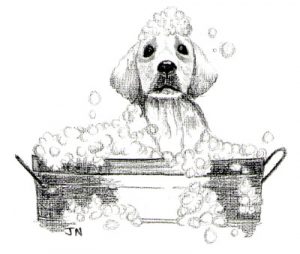 For infestations, such as taking in a stray dog, use the suffocation soap-sud bath method – wet the dog thoroughly and then shampoo using a natural liquid dish soap, i.e. one that is advertised as being very gentle, as well as natural. Seventh Generation is a favourite among dog owners, as well as Ecover, Dove, Ivory, or Dial. You can optionally add some warm Neem oil too for an added bug repellent effect. Lather well to create a lot of suds, smooth over to create a “sud blanket” effect and then leave on for 15 minutes to suffocate the fleas. Rinse thoroughly and comb out the dead fleas with a flea comb. We use this method extensively when taking stray dogs off the street in our work with K9 Rescue.
For infestations, such as taking in a stray dog, use the suffocation soap-sud bath method – wet the dog thoroughly and then shampoo using a natural liquid dish soap, i.e. one that is advertised as being very gentle, as well as natural. Seventh Generation is a favourite among dog owners, as well as Ecover, Dove, Ivory, or Dial. You can optionally add some warm Neem oil too for an added bug repellent effect. Lather well to create a lot of suds, smooth over to create a “sud blanket” effect and then leave on for 15 minutes to suffocate the fleas. Rinse thoroughly and comb out the dead fleas with a flea comb. We use this method extensively when taking stray dogs off the street in our work with K9 Rescue.
HERBAL FLEA (& TICK) SPRAY:
You will need:
– Recycled spray bottle that has a nozzle that can handle oil without getting clogged
– 100ml Spring water (Devin, pink label bottle)
– 5 teaspoons Vodka (to disperse the oil)
– 10-20 ml Neem oil (depending on how strong you want it)
– 5 drops Lavender Essential Oil
– 5 drops Rosemary Essential Oil
– 5 drops Rose Geranium Essential Oil (if you want to make it an anti-tick spray as well)
Shake vigorously before spraying each time.
Please note, this spray is NOT suitable for cats because of the essential oil content.
| Note – raw fed dogs are at low risk to Tick Borne Diseases (TBD) as TBD is a Rickettsial disease, meaning it only affects animals with lower quality nutrition. |
GRANNY’S TICK SPRAY:
– Boil 500 grams of dried thyme with 1 litre of water and one sliced lemon for several minutes
– Run it through a coffee filter
– Put in a spray bottle and keep in the fridge.
| Note – ensure you have a tick removal tool, for any ticks that do get on your dog. For example: http://www.ticktwister.co.uk Note, ticks bite in a slight corkscrew, so the twist (anti-clockwise) reduces the risk of leaving mouth parts behind. |
Alternative pre-made products on the market are Ark Naturals Flea Flicker! Tick Kicker! and CSJs Billy No Mates
FOOD GRADE DIATOMACEOUS EARTH (DE) AS A FLEA POWDER:
Diatomaceous earth (DE) is a powder comprised of micro-skeletons of deceased diatoms, which are a type of algae (both fresh water and sea water varieties occur).
Reported to kill 75% of flies, fleas and ticks that come in contact with it within 72 hrs.
HOW DE WORKS AS A FLEA POWDER:
When applied to the animal’s fur, DE scrubs on the hard exoskeletons of fleas. The tiny granules of silicon (like finely ground sand) work in the tiny holes of the flea’s respiratory system and in the joints of the fleas. Every time the flea moves or breathes, the silicon grinds away at the exoskeleton, eventually killing the flea through blocking/maiming the respiratory holes or by water loss, as the exoskeleton helps keep in the flea’s body water. It works the same way when applied to carpets.
| NOTE: DE is extremely dehydrating both to your own hands and the dogs skin, so caution should be exercised when using this protocol, and ensure all DE is washed out of your dogs fur after 72hrs to avoid skin irritation. |
HOW TO USE DE:
1) 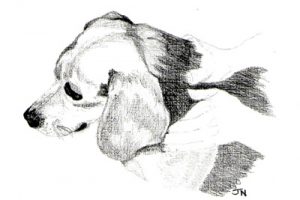 Take care not to breathe in the fine dust as if inhaled it can cause silicosis – rub gently so that it does not become airborne or wear a mask and put one on your pet. Even though it’s non-toxic, you don’t want to get it in your lungs as it will cause a nasty cough.
Take care not to breathe in the fine dust as if inhaled it can cause silicosis – rub gently so that it does not become airborne or wear a mask and put one on your pet. Even though it’s non-toxic, you don’t want to get it in your lungs as it will cause a nasty cough.
2) Sprinkle the DE along your dry pet’s spine. Massage it along the body, working your way carefully to the extremities, avoiding the eyes. Pay attention to warm areas – under ears, neck, arm/leg pits.
3) Spread some diatomaceous earth on the carpets, brush it in and leave for about four days. Then vacuum it up to remove most of the fleas in the carpet.
4) Repeat the application frequently during an infestation. You should notice a decrease in fleas within a couple days.
3) Digestive Issues
INTESTINAL WORM CONTROL:
A dog fed on a natural, species appropriate raw diet is not attractive to intestinal worms as these parasites also prefer the lower vibration of unhealthy bodies.
De-worming should only ever be done based on the results of a faecal exam – for example sending a faecal sample off to Wormcount (UK) or take a sample to your vet for analysis. If the worm burden is low, simply feed a herbal preventative protocol. If, however, for some reason, there is a heavy worm burden, then de-worm just once with a either a chemical de-wormer or the Diatomaceous Earth protocol below and then follow up with the regular herbal preventative protocol:
To prevent worms:
- Garlic is known for both boosting the immune system and raising the body’s frequency to make it less attractive to parasites, so adding just a pinch of chopped wild garlic leaves or the liquid Allitech (which is the extract of only allicin from garlic for the mainstream veterinary concern about thiosulfate in garlic itself), or rosemary, parsley etc once a day to their food, will not only help boost their immune system, it will make the digestive tract and blood inhospitable to worms, to prevent internal infestations by worms etc. as parasites absolutely hate the taste of these herbs in the blood, and the vibration of the body changes so they find it very difficult to take a hold in the body.
- A teaspoon of organic neem leaf powder mixed into food per day (1/2 teaspoon for puppies) is another very effective herb to add, as worms absolutely hate the taste of neem in the blood, so again, find it impossible to feed or flourish in the gut.
- A preventative of chopped pumpkin seeds is also very popular, such as the Kanex worm preventative which is a 50/50 mix of sustainably harvested Dulse, a red seaweed, and organic Styrian pumpkin seeds.
- You will see many health sites advocating the use of Food Grade Diatomaceous earth (DE) for internal parasite control. It is ADAS trialled and approved in the UK for insect control and as a feed additive for farm animals. We have used this very effectively, especially in the early days before other more herbal products came on the market. It is AMazing at safely ridding the body of large worm infestations, at K9 Rescue we have literally seen roundworms tumble out of young street pups bodies in their haste to get away from it, yet we caution it’s use as a regular deworming treatment, due to some concerns associated with prolonged use that requires more, as yet unavailable, study.
FOOD GRADE DIATOMACEOUS EARTH (DE) AS A DEWORMER:
Diatomaceous earth (DE) is a Amorphous silica powder comprised of micro-skeletons of deceased diatoms, which are a type of algae (both fresh water and sea water varieties occur).
When ingested, due to Diatomaceous Earth’s microscopic sharpness the tiny granules of silicon (like finely ground sand) grinds away and cuts through the outer shell of parasites like tapeworms before they can attach to the dogs intestinal lining, whilst the drying effect of the silicon granules gradually dehydrates the worm, eventually killing it.
Reported to eliminate roundworms, whipworms, and hookworms within 7 days of being fed daily. Due to the worm life cycle, feed DE for 30 days to catch any hatching eggs, as DE does not kill the eggs.
Simply feed Food Grade Diatomaceous Earth for 30 days without resorting to a chemical de-wormer.
Quantities per day:
1) Puppies 5kg to 10kg – 2 teaspoons
2) Dogs 10kg to 25kg – 1 to 1.5 tablespoons
3) Dogs 25kg+ – 2 tablespoons
4) Dogs 50kg+ – 3 to 4 tablespoons
| NOTE: Make sure not to use the Crystalline silica kind of DE used in swimming pools which is toxic. Use natural food grade diatomaceous earth; it is available in gardens supply centres, some health food stores, and from natural-pet catalogues such as http://diatomx.co.uk for Europe or http://www.dirtworks.net in the USA. |
SLIPPERY ELM BARK POWDER
– Use for irritated Gastrointestinal Tract, Diarrhoea or Constipation
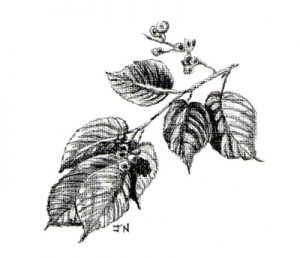 Slippery Elm Bark Powder aids digestion through a soothing and healing action on irritated mucous membranes of the stomach and intestines, and is especially useful if encountering problems when first switching to a raw diet.
Slippery Elm Bark Powder aids digestion through a soothing and healing action on irritated mucous membranes of the stomach and intestines, and is especially useful if encountering problems when first switching to a raw diet.
When mixed to a paste with a little tepid water it has a mucous consistency to it which is soothing internally. It also has a great taste so dogs usually love it too! Alternatively, you can dust the meat with it.
| You don’t need much – one teaspoon up to 3 times a day should be more than enough. |
Slippery elm is a highly nutritious wholesome food product. The bark of the Slippery elm contains mucilage which is a soothing nutritional food, similar in texture to oatmeal and rich in nutrients. Slippery elm is very easy to digest and can be tolerated when other foods can’t. It is, therefore, an ideal food during times of digestive discomfort and for those recovering from illness and is considered a “survival food”.
ACTIVATED CHARCOAL POWDER OR GRANULES
– Use for mild gastroenteritis, food poisoning and stomach upsets.
Activated Charcoal can eliminate fungi, viruses, and bacteria and may also promote recovery from some types of food and other poisonings.
Activated charcoal is simply burnt wood that has had all its oxygen removed leaving it extremely porous. This results in each granule of activated charcoal possessing an extremely large surface area – a single gram of activated carbon has a surface area greater than 500 square meters! It is a non-toxic universal antidote that can be taken internally or applied topically for insect bites and stings. In powdered form, activated charcoal is one of nature’s most efficient adsorbents—a powerful aid in eliminating toxins, gas and many poisons from the stomach and intestines.
It works by adsorption by collecting substances in a condensed form on a surface, and then slides through the stomach and intestines without itself being absorbed. On its way it binds with toxins, wastes, and other substances and then is excreted along with them by the body. It also effectively adsorbs gases, especially in the lower intestine, and thus helps relieve flatulence and gas pains. Not all chemicals are attracted to carbon though, such as sodium and nitrates, so this would need to be borne in mind.
Warning: Do not use charcoal regularly or as a daily supplement, as in addition to adsorption of toxins, activated charcoal also adsorbs food nutrients, vitamins, and minerals.
Activated Charcoal — Directions for Use:
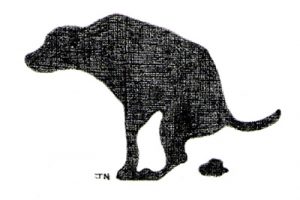 It can be obtained in granule or powder form (e.g. http://healingherbs.biz). Simply mix a dessertspoon of the powder with a little milk or raw egg; most dogs will lap it up willingly.
It can be obtained in granule or powder form (e.g. http://healingherbs.biz). Simply mix a dessertspoon of the powder with a little milk or raw egg; most dogs will lap it up willingly.
1) General intestinal distress and gas: Give up to six times daily as needed. Follow each dose with water.
2) Diarrhoea (due to causes other than when first switching to a raw diet): Give upon first noticing the complaint and again with each bowel movement. Follow each dose with water.
Note: Stool darkening is normal and may continue for a few days after use.
3) Poisoning: Charcoal is most successful if used within the first hour of swallowing poison. In severe poisoning cases, several doses of charcoal might be required. Ordinarily, activated charcoal should not be used to treat the ingestion of corrosive poisons (lye, acids, fuel oil, alcohols, et cetera). In the event of accidental poisoning, please call your vet before using activated charcoal. They will advise as to the use of charcoal after taking info on the type of poison.


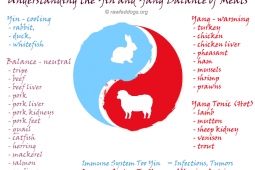
Recent Comments